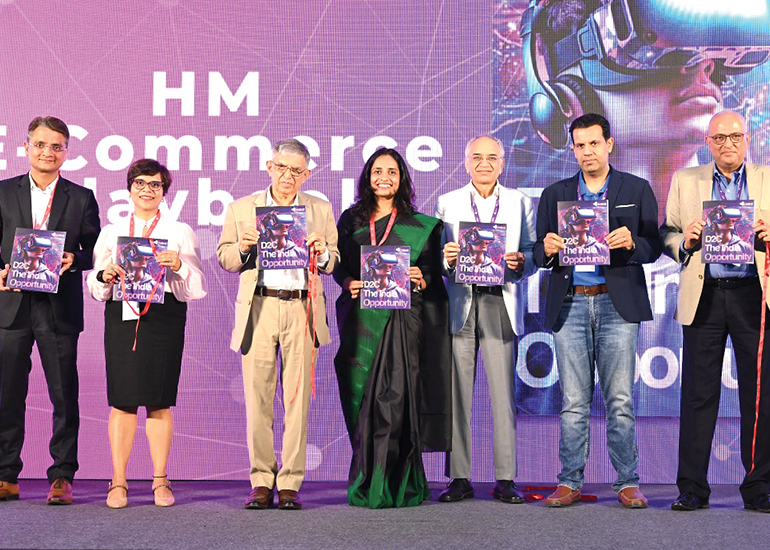“Freedom of the Press is not just important to democracy; it is the democracy” — Walter Cronkite.
While India celebrated the festivals of Lohri, Makar Sakranti, Pongal and Bihu, the nation also received some disturbing news from the government. I&B Ministry’s directive to measurement and ratings agency BARC on 12 January to resume the TRP ratings with immediate effect, could have wide ramifications.
The BARC site and homepage declares itself as a ‘transparent, accurate, inclusive TV audience measurement system’. Remember, the ratings were suspended because of allegations of manual intervention and manipulation by certain employees and the broadcasters want these serious issues addressed before ratings resume. But the question is, has BARC been able to convince the broadcasters that the past issues have been fixed and are the broadcasters satisfied with the BARC’s response?
As I write this piece, the industry is still looking forward to the BARC report on what went wrong in its ratings, operations and the attempts to cover it up by its past leadership. Industry stakeholders are waiting for this report with bated breath. At a meeting with government officials on 16 December, BARC CEO Nakul Chopra, had asked the ministry to consider giving the agency 10 weeks’ lead time to resume ratings, in order to get all its stakeholders on board. Yet the ministry has decided to rush into this decision now to resume TRPs at the earliest.
It has also directed broadcasters to release the last three months’ data in a monthly format for fair and equitable representation of true trends. The Ministry has, moreover, set up a working group under the Chairmanship of Prasar Bharati CEO Shashi Vempati, to consider leveraging the Return Path Data capabilities for the use of TRP services. The contract is between the broadcasters and BARC. This is a dangerous precedent for many reasons and the media industry is likely to repent it many moons later.
The ratings had been suspended for a year post the ratings row. What has changed since then? There are broadly five stakeholders here, the news broadcasters, the non-news broadcasters, the advertisers, the viewers, and let’s say, the fifth one is the government. Even though this bit of information cannot be confirmed, apparently the decision was taken in a day and was in the form of instructions from the top to be implemented fast. Is this a political decision taken by the government with the elections in the key states of Uttar Pradesh, Punjab, Goa and Uttarakhand due over the next 30 days?
There was an unspoken divide amongst broadcasters on whether or not to resume the ratings so quickly. The view to get the ratings back seems to have prevailed. Ostensibly, a certain editor of a relatively new Hindi news channel with proximity to the real decision makers convinced the government stakeholders that bringing back ratings could give an edge to the ruling party’s messaging and narratives to woo voters.
Even though the BARC may effectively take some time to bring back the ratings, the broadcasters know that they are being judged, so the fierce competition for eye balls is likely to turn even fiercer now. The quality of content on news channels has broadly remained unchanged over the last one year. It was continuing on established programming formulas and tested means. One can say with confidence that the shrillness of the content had subsided. The content had become better, as the pursuit of ratings was no longer the only objective. The rates of advertising were broadly secured on past performance, brand strength and historical data.
Will this new development compel the news channels to compete with one another as in the past and make the content shriller and more divisive? As a matter of fact, former I&B ministers of this government have advocated not having TRP or ratings for news channels for this reason. The absence of TRPs has been advocated as a panacea for improving the content of news channels. In an interaction with me more than a decade ago Baba Ramdev had described TRPs as “tatkalin rashtra patan” (instant destruction of the nation). It does seem that his prognosis was not wrong.
Will the content of news channels become loud, shrill and queer the pitch for the anchors and the spokespersons again? Will issues that polarize opinion in every way dominate news coverage once more? Is this a way to get the narrative back? Is this a way to divide the Indian media further and rule it even more effectively?
Two other points need to be factored in. First, the legality of the government directive. Let me say it is kind of binding on BARC. The TRAI guidelines of 2006, implemented and accepted in 2008, stipulate that the government recognise the rating agency or agencies and BARC is a license holder of ratings from MIB. While the BARC can challenge this, it may then attract a show-cause notice from MIB, but still be able to buy two months’ time or so. But the BARC may not want to do this. The BARC has to worry about the currency and its existence.
The second point is that the BARC board and CEO possibly would be very happy with this I&B order and may have actually built a case with MIB for making this happen as BARC’s revenues and outstandings are a cause for concern. In the absence of the supply of ratings data, there were huge outstandings of the broadcasters to BARC. With ratings coming back, broadcasters will need to pay their past dues as well as the fees for the current ratings. The BARC may actually be happy with the order and may have even used the clout of the BARC board members to get the order from the MIB. It’s clearly a win-win for BARC and the government.
Meanwhile, the budgets of political parties for news channels in particular, and digital channels in general, are huge. Will this measure also help the political masters get a better bargain from the news channels? These are indeed, poignant questions to ponder on. Will this retrograde decision lead to more decisions that damage the fabric of democracy and Indian media?























